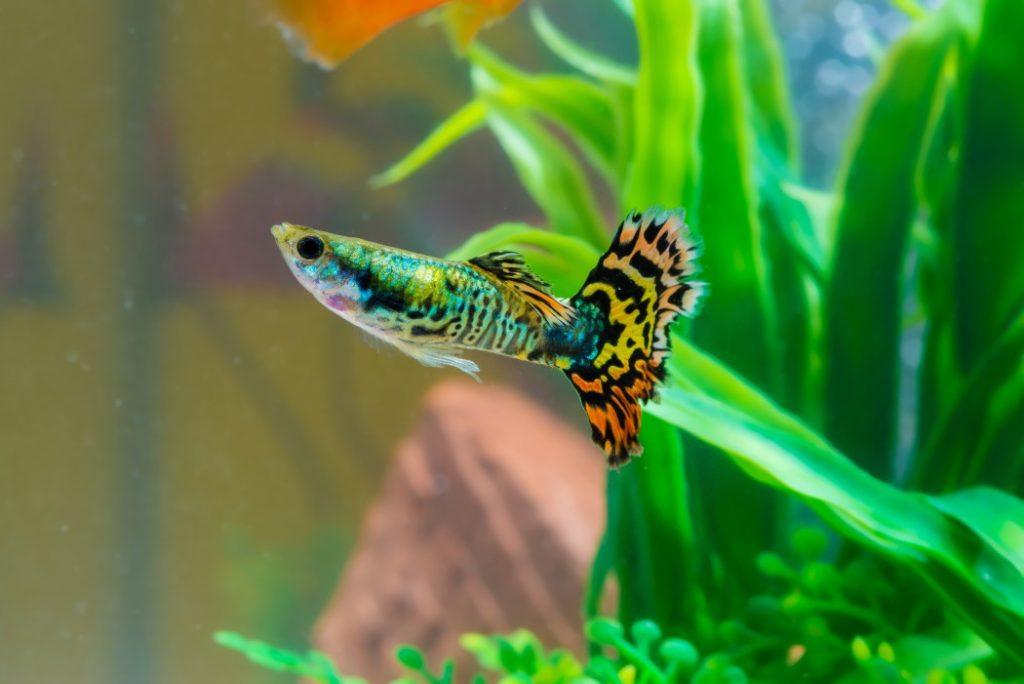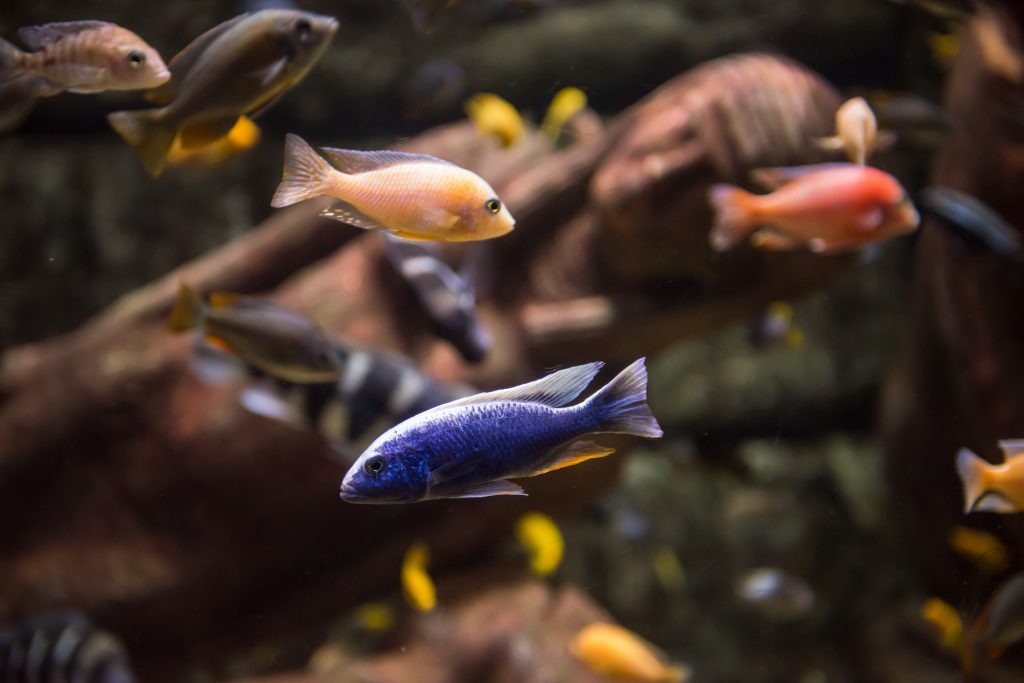Livebearing fish are any species that hold and hatch eggs inside their body, and therefore “give birth” to free-swimming fry. They are extremely common in the aquarium trade, as livebearing results in high offspring survival rates which maintains good availability in pet stores.

Livebearing fish in aquaria
Many of the most common and easiest to keep aquarium fish are livebearers in the Poeciliidae family. These include guppies, mollies, platies, swordtails, and mosquito fish.
The livebearing species are considered to be the ideal fish for beginners. In addition to being readily available, attractive, placid, and affordable; they’re a great practice species for keepers interested in breeding fish.
Seahorses are also livebearing fish, but they’re far less common in aquariums and nowhere near as easy to look after as the Poeciliidae fish.
Livebearing vs mouthbrooding
Mouthbrooding is functionally similar to livebearing. A mouthbrooding fish still lays eggs, but they’re quickly scooped up and incubated inside the parent’s mouth. After hatching, they continue to live inside the mouth for as long as possible, emerging only when there are no predators nearby.
Cichlids—particularly African cichlids—are the most common mouthbrooders in the aquarium trade. A small number of marine fish, such as the Banggai cardinalfish, will also mouthbrood their young.

Protecting baby fish
When food becomes scarce, it’s not uncommon for livebearing fish to eat their offspring. Specially designed livebearer birthing tanks are available from aquarium stores. Depending on the design, these can be suspended either inside or outside of the aquarium.
Dense plant and driftwood habitats can be created to provide young fish hiding places. In a well designed community aquarium, it may be possible for livebearer fry to reach maturity without any human intervention.
